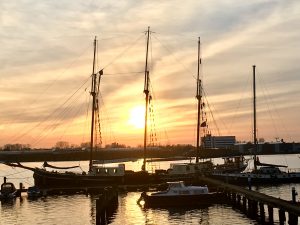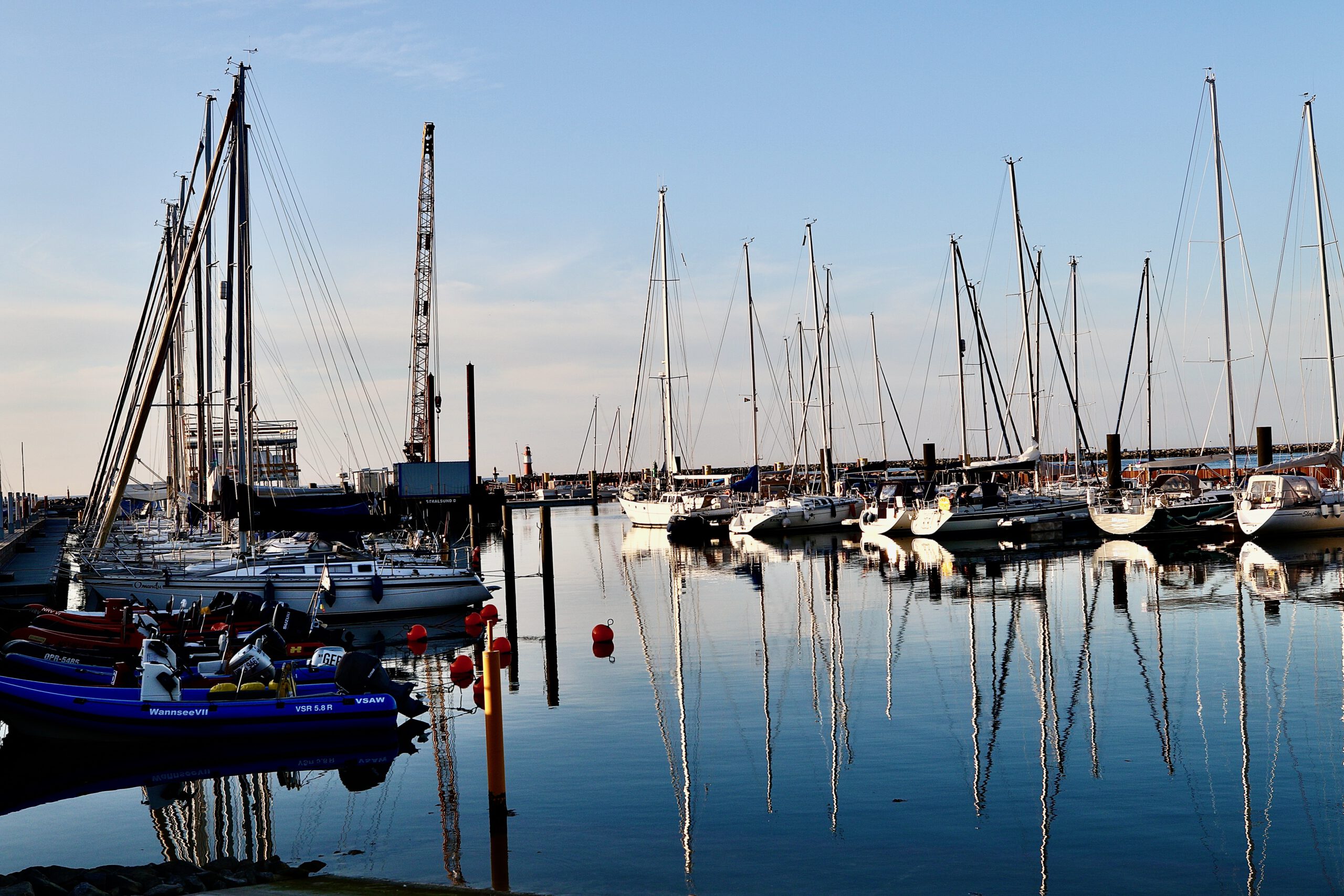Saphenion®: Krampfadertherapie im Sommer? Viele Vorbehalte.
Saphenion®: Varicose vein therapy in summer? Many reservations.
Saphenion®: Krampfadertherapie im Sommer? Nach wie vor hält sich bei vielen Kollegen und Patienten der Glaube, dass eine Krampfader-Therapie nicht in den warmen Monaten möglich sei – oder besser nicht durchgeführt werden sollte.
Diese Vorbehalte sind bei den heute noch vielfach praktizierten althergebrachten Verfahren des radikalen Herausziehens vollkommen verständlich, denn wer legt sich schon gerne im Sommer für drei Tage ins Krankenhaus und trägt 8-12 Wochen Kompressionsstrümpfe.
Auch die neueren, mittels thermischer Energie arbeitenden Katheterverfahren Radiowelle und Laser oder auch Heißdampfkatheter machen das Tragen von Kompressionsstrümpfen für mindestens 2-4 Wochen erforderlich.
So verzichten auch bei diesen modernen, ohne Hautschnitte funktionierenden kathetergestützten Therapieformen viele Patienten auf eine Therapie in den Sommermonaten.
Saphenion®: Varicose vein therapy in summer? Many colleagues and patients still believe that varicose vein therapy is not possible in the warmer months – or that it is better not to perform it.
These reservations are completely understandable in the case of the traditional procedures of radical extraction that are still widely practiced today, because who likes to be hospitalized for three days in the summer and wear compression stockings for 8-12 weeks?
The newer catheter procedures using thermal energy, such as radio waves and lasers or hot steam catheters, also require the patient to wear compression stockings for at least 2-4 weeks.
Thus, even with these modern catheter-based forms of therapy, which work without skin incisions, many patients forego therapy during the summer months.

Saphenion®: Krampfader-Therapie im Sommer? Kein Problem!
Saphenion®: Varicose vein therapy in summer? No problem!
Venenkleber und Mikroschaum ermöglichen auch in den warmen Jahreszeiten eine Behandlung der Krampfadern. Dank der seit nunmehr 11 Jahren praktizierten Technik des Verklebens der Krampfadern sind Eingriffe an Stammvenen jederzeit in allen Jahreszeiten möglich. Seitenastkrampfadern, Netzvenen und Besenreiser lassen sich inzwischen auch in den warmen Monaten behandeln. Hierbei ist nur ein kurzer Verzicht auf ein langes Sonnenbad zu empfehlen. Auch die Kompressionstherapie ist in vielen Fällen nicht mehr notwendig.
Oder man wartet einfach das Ergebnis des Venenklebers ab, denn bei diesem Verfahren berichten eine grosse Zahl von Patienten über einen deutlichen Rückgang der kosmetisch störenden Seitenast – und Netzvenen bereits nach dem Verkleben – aus diesem Grund wird bei SAPHENION® – wie bei vielen anderen Kollegen auch – mit der anschließenden Mikroschaumtherapie auch erst einmal abgewartet. In einigen Fällen ist diese Therapie auch gar nicht mehr notwendig!
Die VenaSeal® – Venenverklebung ist seit 11 Jahren bekannt und inzwischen weltweit eingeführt und stellt den vorläufigen Höhepunkt bei der Entwicklung der minimalinvasiven „sanften“ Krampfader-Therapie dar. Dabei werden kranke Venen ohne Narkose mit einem medizinischen Klebstoff, der bereits seit mehr als 50 Jahren in Venen, Arterien u. a. im Gehirn eingesetzt wird, in nur 30 Minuten verschlossen. Simultane Behandlungen mehrerer Stammvenen sind möglich und werden bei uns auch regelmäßig durchgeführt – denn der Venaseal® – Katheter ermöglicht tatsächlich eine Therapie von bis zu 4 Stammkrampfadern an beiden Beinen simultan!
Vorteile: Bei der Behandlung mit Venenkleber oder Mikroschaum wird kein Gewebe verletzt, wir sehen seit 17 Jahren Mikroschaumtherapie bei fast 20 000 Patienten und nach fast 11 Jahren Einsatz des Venenklebers an inzwischen 3940 Stammvenen keine wesentlichen Nebenwirkungen oder gar Komplikationen. Eine Anästhesie oder Narkose ist nicht notwendig.
Außerdem – und das ist für den Sommer ganz wichtig – ist das Tragen von Kompressionsstrümpfen im Anschluss an die Behandlung mit dem Venenkleber in der Regel nicht notwendig, bei der Mikroschaumtherapie sind 10-14 Tage Tragen von Maßstrümpfen sinnvoll und empfohlen.
Vein glue and microfoam make it possible to treat varicose veins even in the warm seasons. Thanks to the technique of gluing varicose veins, which has been practiced for 11 years now, interventions on truncal veins are possible at any time of the year. Side branch varicose veins, reticular veins, and spider veins can now also be treated in the warmer months. In this case, only a short refrain from long sunbathing is recommended. Compression therapy is also no longer necessary in many cases.
Or one simply waits for the result of the vein gluing, because with this procedure a large number of patients report a clear decrease in the cosmetically disturbing side branch and net veins already after the gluing. For this reason, SAPHENION® – as well as many other colleagues – also wait for the subsequent microfoam therapy. In some cases, this therapy is not even necessary!
VenaSeal® vein glue has been known for 11 years and has been introduced worldwide in the meantime. It represents the preliminary peak in the development of minimally invasive „gentle“ varicose vein therapy. In this procedure, diseased veins are closed in only 30 minutes without anesthesia using a medical adhesive that has been used for more than 50 years in veins, arteries, and in the brain, among others. Simultaneous treatments of several truncal veins are possible and are also regularly performed at our clinic – because the Venaseal® – catheter actually enables a therapy of up to 4 truncal varicose veins on both legs simultaneously!
Advantages: No tissue is injured during treatment with vein glue or microfoam, we have seen microfoam therapy in almost 20,000 patients for 17 years, and after almost 11 years of using vein glue on 3940 truncal veins now, no significant side effects or even complications. There is no need for anesthesia or anesthesia.
In addition – and this is very important for the summer – wearing compression stockings after the treatment with the vein glue is usually not necessary, with the microfoam therapy 10-14 days of wearing custom-made stockings is reasonable and recommended.
Saphenion®: Krampfadertherapie im Sommer? Erfahrungen mit Venenkleber seit 2012
Saphenion®: Varicose vein therapy in summer? Experience with vein glue since 2012
Wir haben uns davon überzeugen können, dass das Verkleben von Venen mit dem VenaSeal® System und die anschließende Mikroschaumverklebung von störenden Netzvenen und Besenreisern tatsächlich recht schmerzarm und ohne große Nebenwirkungen sehr effektiv auch im Sommer möglich ist.
Der behandelte Patient verlässt die Praxis in der Regel ohne jede Einschränkung und könnte dann sofort an den Müggelsee oder nach Warnemünde an den Strand fahren und sich in die Wellen der Ostsee stürzen. Oder aber auf sein Segelboot steigen. Frau geht danach zum Visagisten, um sich für die Philharmonie oder die Hanse Sail schön zu machen.
Inzwischen kommen auch Urlauber aus Süddeutschland zu uns, um während ihres Ostseeurlaubs die Venen mit den beschriebenen Methoden therapieren zu lassen.
We have been able to convince ourselves that the sealing of veins with the VenaSeal® system and the subsequent microfoam bonding of troublesome reticular veins and spider veins is actually quite painless and very effective without major side effects, even in summer.
The treated patient usually leaves the practice without any restrictions and could then immediately go to the Müggelsee or to Warnemünde to the beach and plunge into the waves of the Baltic Sea. Or get on his sailboat. Afterward, the woman goes to the make-up artist to make herself beautiful for the philharmonic or the Hanse Sail.
In the meantime, vacationers from southern Germany also come to us to have their veins treated with the methods described during their Baltic Sea vacation.

Fotos: Utzius
Literatur / Links:
Damnjanović Z, Jovanović M, Stojanović M. Correlation between the climatic factors and the pathogenesis of deep vein thrombosis. Hippokratia. 2013 Jul;17(3):203-6. PMID: 24470728; PMCID: PMC3872454.
Frappé P, Bertoletti L, Presles E, Buchmuller-Cordier A, Merah A, Le Hello C, Peycelon D, Tardy B, Décousus H. Seasonal variation in the superficial vein thrombosis frequency. Thromb Res. 2015 Dec;136(6):1116-9. doi: 10.1016/j.thromres.2015.10.007. Epub 2015 Oct 8. PMID: 26462408.
Galle C, Wautrecht JC, Motte S, Le Minh T, Dehon P, Ferreira J, Dramaix M, Dereume JP. Rôle de la saison dans l’incidence de la thrombose veineuse profonde [The role of season in the incidence of deep venous thrombosis]. J Mal Vasc. 1998 Apr;23(2):99-101. French. PMID: 9608921.
Kakkos SK, Lampropoulos G, Papadoulas S, Ntouvas I, Tsolakis I. Seasonal variation in the incidence of superficial venous thrombophlebitis. Thromb Res. 2010 Aug;126(2):98-102. doi: 10.1016/j.thromres.2010.04.016. PMID: 20553952.
